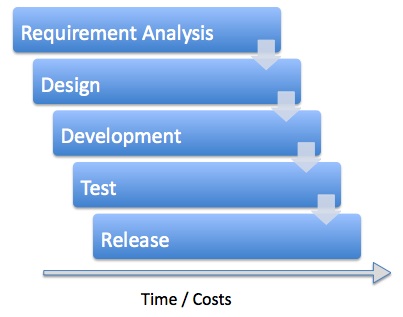Agile methodology is a practice that helps continuous iteration of development and testing in the SDLC process. Agile breaks the product into smaller builds.
Scrum is a lightweight agile project management framework mainly used for software development. It describes an iterative and incremental approach for project work.
Scrum can be used in all kinds of software development: for developing complete software packages or for developing only some parts of bigger systems.
The Scrum Framework implements the cornerstones defined by the Agile Manifesto:
- Individuals and interactions over processes and tools
- Working software over comprehensive documentation
- Customer collaboration over contract negotiation
- Responding to change over following a plan
Components of Scrum Framework are:
- The three roles: Scrum Master, Scrum Product Owner and the Scrum Team
- A prioritized Backlog containing the end user requirements
- Sprints
- Scrum Events: Sprint Planning Meeting (WHAT-Meeting, HOW-Meeting), Daily Scrum Meeting, Sprint Review Meeting, Sprint Retrospective Meeting
Role of Scrum Master: The Scrum Master is important role in the Scrum Framework as it works as a supervisor-reportee with the Scrum Team. His/her main tasks are to make the Scrum team understand how Scrum operates, to protect the Scrum Team from external interruptions and to remove impediments that hinder the Scrum Team to reach its maximum productivity.
Continuous Improvement: Scrum Framework promote continuous improvement: by inspection & adaption. The Scrum Teams have to frequently inspect and assess their created artifacts and processes in order to adapt and optimize them. In the midterm this will optimize the results, increases predictably and therefore minimize overall project risk.
Handling Change in Requirement: In Scrum, changes and optimizations of product, requirements and processes are an integral part of the whole engineering cycle.The Scrum Framework deal with the fact that the requirements are likely to change or are not completely known at the start of the project. The low-level requirements are only defined at the time when they are going to be really implemented.
Scrum Work Style: Communication is a key aspect of Scrum Framework. The Scrum Product Owner works closely with the Scrum Team to identify and prioritize functionality. This functionality is written down in user stories and stored in a Scrum Product Backlog. The Product Backlog consists everything that needs to be done in order to successfully deliver a working software system.











